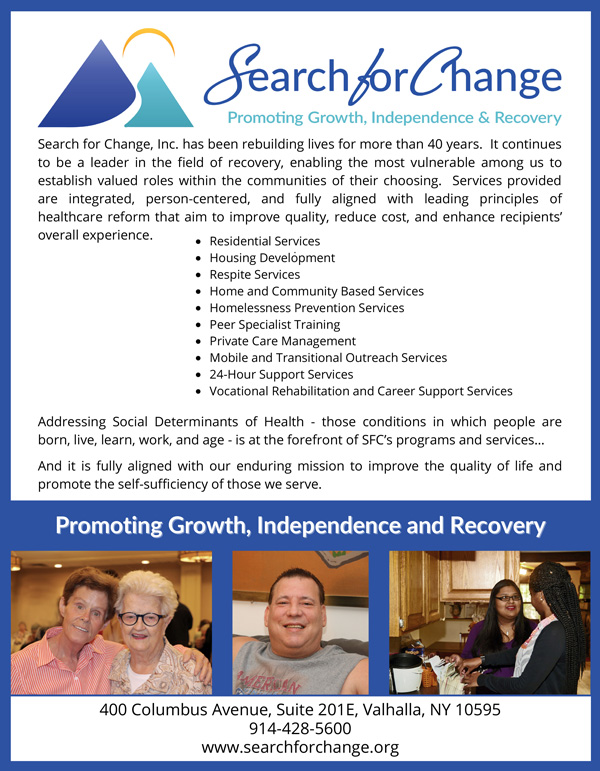In recent decades we have witnessed a proliferation of models for the treatment of behavioral health conditions, many of which enjoy robust evidence bases that support their application in accordance with overarching principles and intended outcomes. In many respects, we inhabit a “Golden Age” of behavioral healthcare that promises new pathways to recovery for individuals experiencing emotional distress and a broad array of psychosocial challenges. This differentiates the present from preceding eras characterized by a reliance on ad hoc treatment interventions employed by practitioners of diverse theoretical backgrounds. Such interventions were often informed by paternalistic or clinician-centric philosophies that viewed conformity with established social norms as the primary hallmark of “success” in the treatment process.

The Recovery Movement and others that elevate persons above pathology have enabled us to adopt a more expansive view of human suffering – one that regards those entrusted to our care as more than mere constellations of symptoms or sums of discrete parts. We now understand Social Determinants of Health (SDoH), Adverse Childhood Experiences (ACEs), and other progenitors of post-traumatic stress must be addressed if treatment is to be truly person-centered and effective. Recent developments in the sociopolitical sphere continually remind us of enduring inequities (and egregious injustices) perpetrated against Black, Indigenous, Persons of Color, and other marginalized populations that must be similarly addressed lest the behavioral healthcare establishment remains complicit in perpetuating such inequities.
A casual observer uninitiated in the intricacies of our healthcare system would be forgiven for concluding it has finally achieved some measure of enlightenment in its treatment of the human condition. Indeed, the value and import of select advances are beyond dispute. Most are no longer solely a product of theoretical consensus but the result of painstaking research that rests on a presumed bedrock of empiricism and purportedly leads to conclusions of proven validity and reliability. In short, the tools of the natural science trade are now operating in realms once characterized as nothing short of pseudoscience. This has produced lasting benefits for the behavioral healthcare industry and the vulnerable individuals who depend on it. The consistent application of evidenced-based practices (and dissemination of supporting information to practitioners, service recipients, their family members, and other stakeholders) is foremost among the tangible advantages of this movement. But it also poses grave hazards. McIntyre (2002) enumerates a variety of liabilities associated with the unwavering application of “proven” treatment models that promise to ameliorate specific manifestations of human distress as assessed by the presence of particular symptoms. He cites gaps in the research base (particularly as they relate to the treatment of individuals of diverse racial, ethnic, and geographic backgrounds) that perpetuate disparate treatment and associated inequities. He also cites enduring resource limitations that preclude the timely or consistent application of emerging practices to recipients in urgent need, and he echoes other authors who admonish practitioners against unduly strict adherence to models that inadvertently exclude elements of experience inconsistent with the diseases or conditions for which they were developed. Hyman (2010) describes this challenge as one of “reification” through which various practice guidelines and heuristics become concretized and rigidly applied in a manner that fails to account for the innumerable contextual variables’ characteristic of human experience. Although this author’s critiques are directed largely at the system through which behavioral health conditions are classified, they may be similarly applied to treatment approaches formulated to address conditions enumerated in classifications of questionable validity. He specifically suggests our Diagnostic and Statistical Manual of Mental Disorders (DSM) and International Classification of Diseases (ICD) have achieved acceptable levels of interrater reliability (i.e., consistency of application across practitioners) but fall short of capturing the full panoply and nuance of human experience integral to validity. Treatment models predicated on a nosology of suspect validity are, by corollary, similarly suspect.
Another author addresses this in simple and succinct terms. Kinderman (2014) writes, “We need to place people and human psychology central in our thinking.” He espouses approaches that account for myriad factors that influence mental health and wellbeing including biological processes, SDoH, and life circumstances in general. Thomas Insel, a psychiatrist and former Director of the National Institute of Mental Health, advocates a more expansive view that acknowledges limitations inherent in traditional healthcare (Insel, 2022). He reminds us only a modest share of health outcomes should be attributed to healthcare. The lion’s share is governed by socioeconomic and other factors (i.e., one’s “station” in life). Borrowing language from a colleague who serves exceptionally vulnerable individuals (i.e., homeless persons with behavioral health conditions), he places “the three Ps” (“people, place, and purpose”) at the forefront of the recovery process. That is, for human suffering to be transformed it must find support from others, a place (or sanctuary) to facilitate healing, and a mission or purpose. Emerging Alternative Payment Models (APMs) and other innovative approaches to whole-person care have begun to compensate providers who address the three Ps and other SDoH, but this trend is neither widespread nor consistently applied across payers and their covered populations. Insel suggests nothing less than a “reframe[ing of] what we mean by care” is necessary if we are to bridge the gap between current service delivery and reimbursement practices and their intended outcomes.
Progress in any field of inquiry is fraught with detours, dead ends, and missteps, most of which are recognized as such only in hindsight. Inasmuch as psychiatry (and human services generally) boasts that loftiest of aspirations – an understanding of the surpassing complexities of the human mind and behavior – errors and repeated course corrections are inevitable. This does not invalidate emerging treatment models and the evidence bases on which they rest, provided practitioners are appropriately discerning in their application. To paraphrase Johann Jacob Löwenthal, a preeminent 19th Century chess player, mastery is marked by the judicious violation of general principles. The application of treatment models must be similarly judicious – and even violative of core tenets at times – if it is to be truly masterful in mitigating human suffering.
Ashley Brody, MPA, CPRP, Chief Executive Officer, Search for Change, Inc., may be reached at (914) 428-5600 (x9228) or abrody@searchforchange.org.






